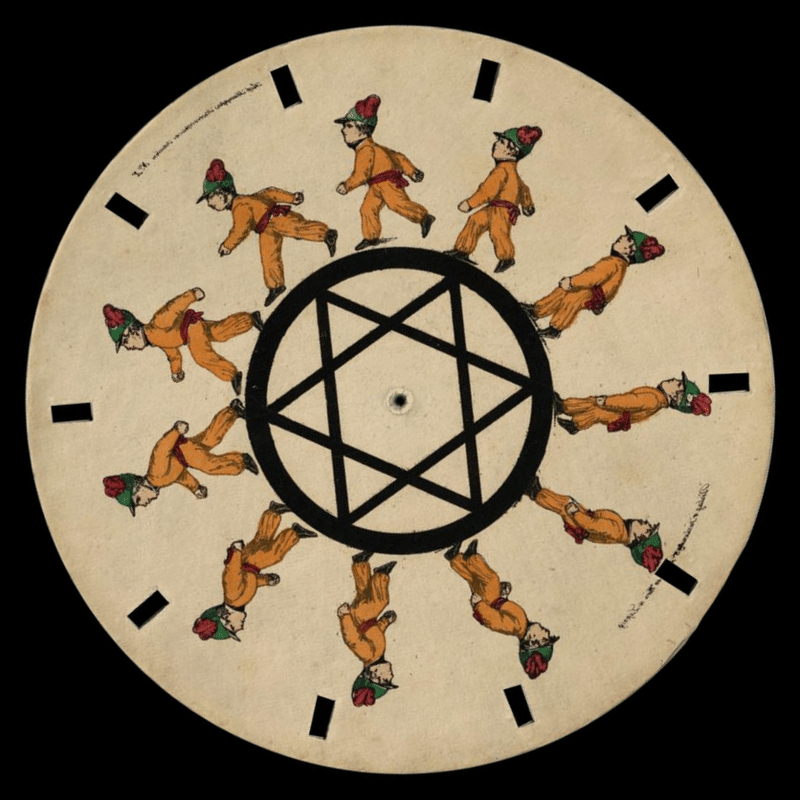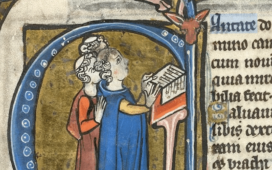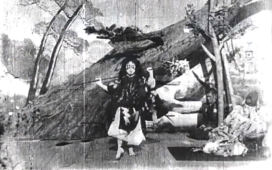

The image just above is an animated GIF, a format by now older than most people on the internet. Those of us who were surfing the World Wide Web in its earliest years will remember all those little digging, jackhammering roadworkers who flanked the permanent announcements that various sites — including, quite possibly, our own — were “under construction.” Charming though they could be at the time, they now look impossibly primitive compared to what we can see on today’s internet, where high-resolution feature films stream instantaneously. But technologically speaking, we can trace it all back to what this particular animated GIF depicts: the phenakistiscope.
Invented simultaneously and independently in late 1832 by Belgian physicist Joseph Plateau and Austrian geometry professor Simon Stampfer, the phenakistiscope was a simple wheel-shaped device that could, for the first time in the history of technology, create the illusion of a smoothly moving picture when spun and viewed in a mirror: hence the derivation of its name from the Greek phenakisticos, “to deceive,” and ops, “eye.”
When it caught on as a commercial novelty, it was also marketed under names like Phantasmascope and Fantascope, which promised buyers a glimpse of horse-riders, twirling dancers, bowing aristocrats, hopping frogs, flying ghouls, and even proto-psychedelic abstract patterns, many of which you can see re-animated as GIFs in this Wikipedia gallery.
Eventually, according to the Public Domain Review, the phenakistiscope was “supplanted in the popular imagination: firstly by the similar Zoetrope, and then — via Eadweard Muybridge’s Zoopraxiscope (which projected the animation) — by film itself.” Muybridge, previously featured here on Open Culture, did pioneering motion-photography work in the eighteen-seventies that’s now considered a precursor to cinema. Understanding what he was up to is an important part of understanding the emergence of movies as we know them. But the most instructive experience to start with is making a phenakistiscope of your own, instructions for which are available from the George Eastman Museum and artist Megan Scott on YouTube. The finished product may not hold anyone’s attention long here in the age of Netflix, but then, the age of Netflix would never have arrived had the phenakistiscope not come first.
Related content:
How Animated Cartoons Are Made: A Vintage Primer Filmed Way Back in 1919
The Trick That Made Animation Realistic: Watch a Short History of Rotoscoping
Was a 32,000-Year-Old Cave Painting the Earliest Form of Cinema?
Based in Seoul, Colin Marshall writes and broadcasts on cities, language, and culture. His projects include the Substack newsletter Books on Cities and the book The Stateless City: a Walk through 21st-Century Los Angeles. Follow him on the social network formerly known as Twitter at @colinmarshall.














